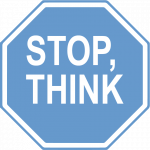Ch. 2: “Date Rape” and “Club” Drugs
The U.S. National Institute on Drug Abuse (NIDA) identified the following as “club drugs” because they frequently are (mis)used recreationally in nightclub, concert, or rave venues:
- Ecstasy/MDMA,
- GHB,
- ketamine,
- Rohypnol (flunitrazepam),
- methamphetamine, and
- LSD (lysergic acid diethylamide).
Four of these drugs are also specified as “club drugs” by the U.S. Office of National Drug Control Policy (ONDCP):
- MDMA,
- GHB,
- ketamine, and
- Rohypnol (Chakraborty, Neogi, & Basu, 2011).

Some of these drugs are difficult to detect when dissolved in a beverage, being odorless, relatively tasteless, and colorless. Reputable manufacturers are adding dyes to their products so that they will show up in a clear beverage (e.g., Hoffman-La Roche add a blue dye to Rohypnol pills). Harm/risk reduction strategies related to these substances include avoiding alcohol if their use is intentional, not leaving a beverage unattended, and having friends in attendance looking out for each other (Chakraborty, Neogi, & Basu, 2011).
In this module focused on sedative-hypnotic and CNS depressant drugs, we take a closer look at the club/date rape drugs GHB, ketamine, and Rohypnol; other club drugs will be explored in future modules concerning stimulant or hallucinogenic substances. Sources for the information below include U.S. Drug Enforcement Administration (DEA) drug facts websites and the National Institute on Drug Abuse (NIDA) drug facts websites.
GHB
The chemical name for GHB is gamma-hydroxybutyrate sodium; “street” or “club drug” names include G, grievous bodily harm, firewater, scoop, poor man’s heroin, liquid ecstasy, and liquid X. The prescription form, Xyrem® (sodium oxybate), is either a liquid or white powder that dissolves in liquids. Illicit preparations include liquids, pills, capsules, and powder forms. GHB is a CNS depressant with intoxicating effects similar to some experienced with alcohol use; GHB amplifies the effects of alcohol when they are combined (Chakraborty, Neogi, & Basu, 2011). It has been approved for prescription use in the U.S. to treat certain forms of narcolepsy; in some European practices, Xyrem® has been used to treat alcohol use disorders and alcohol withdrawal syndrome.
The acute effects of GHB last 2-6 hours and include hallucinations, euphoria, drowsiness, decreased anxiety, aggression, and enhanced libido. At moderately low doses GHB has an amnesic effect and/or causes confusion. At a moderate to high dose it causes hallucinations, respiratory depression and/or apnea (impaired breathing), unconsciousness, and possibly coma or death—especially when combined with alcohol. GHB has relatively high addictive potential and potentially dangerous withdrawal symptoms. GHB overdose is also potentially deadly due to its effects on breathing and potential for coma; there is no antidote or reversal medication for GHB overdose.
Ketamine
Ketamine is a relatively short-acting anesthetic with human and veterinary medicine uses. Ketamine can induce feelings of calmness and relaxation, along with cognitive impairment (attention, learning, memory), as well as pain relief, loss of body control/immobility, and amnesia. It is misused for its hallucinogenic effects, creating a dream-like state and/or altered perceptions. While it could be discussed in the module concerning hallucinogenic substances, it is placed here because (1) it is sometimes used as a “date rape” (sexual assault) drug and (2) in high doses it can cause amnesia, agitation, unconsciousness, depression, and respiratory problems. Flashback experiences have been reported with ketamine use.
The “street” or “club drug” names for ketamine include special K, K, super K, vitamin K, kit kat, keets, jet, purple, and cat valium. Ketamine comes in liquid form that can either be injected or mixed with other liquids, or a powder that is mixed in drinks, snorted, or smoked (often in combination with cannabis or tobacco). Acute effects include rapid heartrate, high blood pressure, and depressed breathing/apnea events, and use is associated with injury because of its suppression of pain responses (Chakraborty, Neogi, & Basu, 2011). Ketamine is potentially addictive and chronic use may lead to reduced pain sensation, loss of coordination, difficulty with concentration, insomnia, drowsiness, slurred speech, and bladder incontinence. Withdrawal symptoms include loss of appetite, fatigue, irregular heartbeat, anxiety, depression, tremors, sweating and chills, as well as nightmare disturbed sleep. Ketamine is often used in a mixed sequence of polydrug use involving stimulants (e.g., methamphetamine, cocaine) or heroin (Chakraborty, Neogi, & Basu, 2011). It is a Schedule III drug in the U.S.
Rohypnol
The generic name for the drug Rohypnol is flunitrazepam; it is known by various “street” or “club drug” names, most commonly as ruffies or rophies, but also as circles, forget me pills, R2, and roche. It can be dissolved in liquids (especially carbonated beverages), swallowed as a pill, or crushed and snorted. Rohypnol is a benzodiazepine depressant, intended as a pre-surgical anesthetic, muscle relaxant, sleeping, or anxiolytic (anti-anxiety) medication, but is not an approved prescription drug in the U.S. (Schedule I).
It can cause drowsiness/sleep, relaxation/calmness, amnesia for events occurring while under its influence, slurred speech, confusion, impaired mental function/impaired judgement, dizziness, loss of coordination/impaired motor function, aggression, decreased blood pressure, drop in body temperature, and slowed breathing. These effects contribute to its reported use as a “date rape” (sexual assault) drug with the onset of effects being fairly quick and the effects persisting for 8-12 hours. With repeated use, Rohypnol is potentially addictive, and its effects are amplified with alcohol. Overdose with Rohypnol is potentially fatal due to its breathing and coma effects; a benzodiazepine antagonist (flumazenil) may help reverse the effects of flunitrazepam overdose.

Visit the website hosted by the U.S. Department of Health & Human Services concerning date rape drugs at https://www.womenshealth.gov/a-z-topics/date-rape-drugs. Read through the responses to the set of questions linked at this site. Create a 1-page handout/flyer of what you believe is the most relevant information that would be appropriate and important to post in women’s restrooms, for shared-ride drivers to hand to passengers, and for physicians to provide to their patients (including transgender patients).
